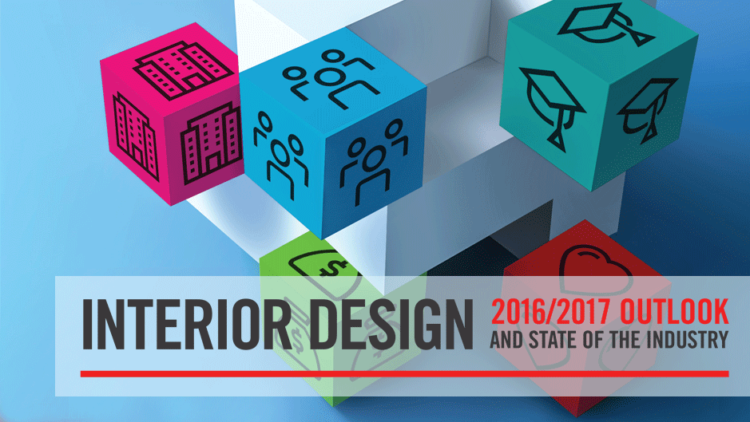Interior Design 2016-2017 Outlook and State of the Industry

At ASID, we know that interior design impacts the human experience. Effective interior design makes workers more efficient, helps students learn, and helps everyone get and stay healthy; it helps us have fun, age gracefully, and connect with family. Design is at the crux of how we live, work, and play. But if this is how interior designers impact the world around us, what impacts interior designers? When we sit down at the drafting table, what factors are at play? And how do they impact the designs we ultimately produce? For the 2016-2017 Interior Design Outlook and State of the Industry report, we hypothesize that in order to understand the built environment, where we spend about 93% of our lives, we must first understand what impacts the people who design it.
Using input from industry thought leaders, educators, and specialists across the design sectors, we’ve identified key factors at global, national, and industry levels that affect the profession, and organized them according to their degree of impact on designers as individuals, and on their projects. Though open to interpretation, our Think Tank Challenge participants ranked categories of business environment, traits of the individual designer, knowledge, and generational differences as high-impact factors affecting the design professional. The sociopolitical landscape, science and technology, innovation, and morality/ethics appear to have a medium impact. Meanwhile, the regional and global contexts have low but persistent impacts on designers. When considering factors that affect a given project, the groupings and degree of impact shift slightly, but the factors are essentially unchanged.
Beyond identifying factors and ranking them according to impact, we also discussed how each one affects design, and whether its impact is likely to rise or fall over the next three to five years. Several interesting connections became apparent, such as the link between the perceived value of design, time pressure, and the possible downward trajectory of design excellence. But while there are pressures that negatively affect design, we also heard about a cross current of innovation, and a breakdown of silos that is elevating the profession. We also found complex linkages between community, generational differences, and a push toward well-being through design that together are reshaping how we think about space.
The factors affecting design, and thus the world around us, are complex and changing. Indeed, it seems that we are not only in a period of tremendous change for both the business and practice of design, but the pace of change is accelerating, with no signs of slowing. This complex, dynamic, and accelerating environment is difficult to navigate, but we close each section and the report as a whole by challenging ASID members and the broader design community to proactively push the boundaries that box us in, to form new connections, and to demonstrate the impact of design. Whatever factors may be at work, they have conspired to make the business of design quite good over the past 12 months, and we expect that to continue. Last year’s State of the Industry report showed that interior design had fully recovered to pre-recession levels, and the momentum carried through this year, with only slight moderation. According to the U.S. Bureau of Labor Statistics and the U.S. Census, the number of interior designers has grown by 11.9% to 68,067, and the number of firms has grown by nearly 6% to 12,642. Construction spending is up over last year, with 8% growth in residential, and 9% in nonresidential. Designers remain optimistic about the outlook, and this has translated into a hot job market, with 29% of firms looking to hire this year (up 4 % from last year). Interior design is a strong and growing sector. It’s complex, changing, and accelerating, but ASID is helping its members and the broader design community navigate the changes by providing them with resources that give them an enhanced understanding of the built environment, and empowering designers to use the factors that affect design to our advantage.
You must be logged in to receive the member price.